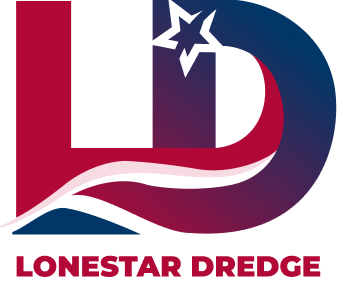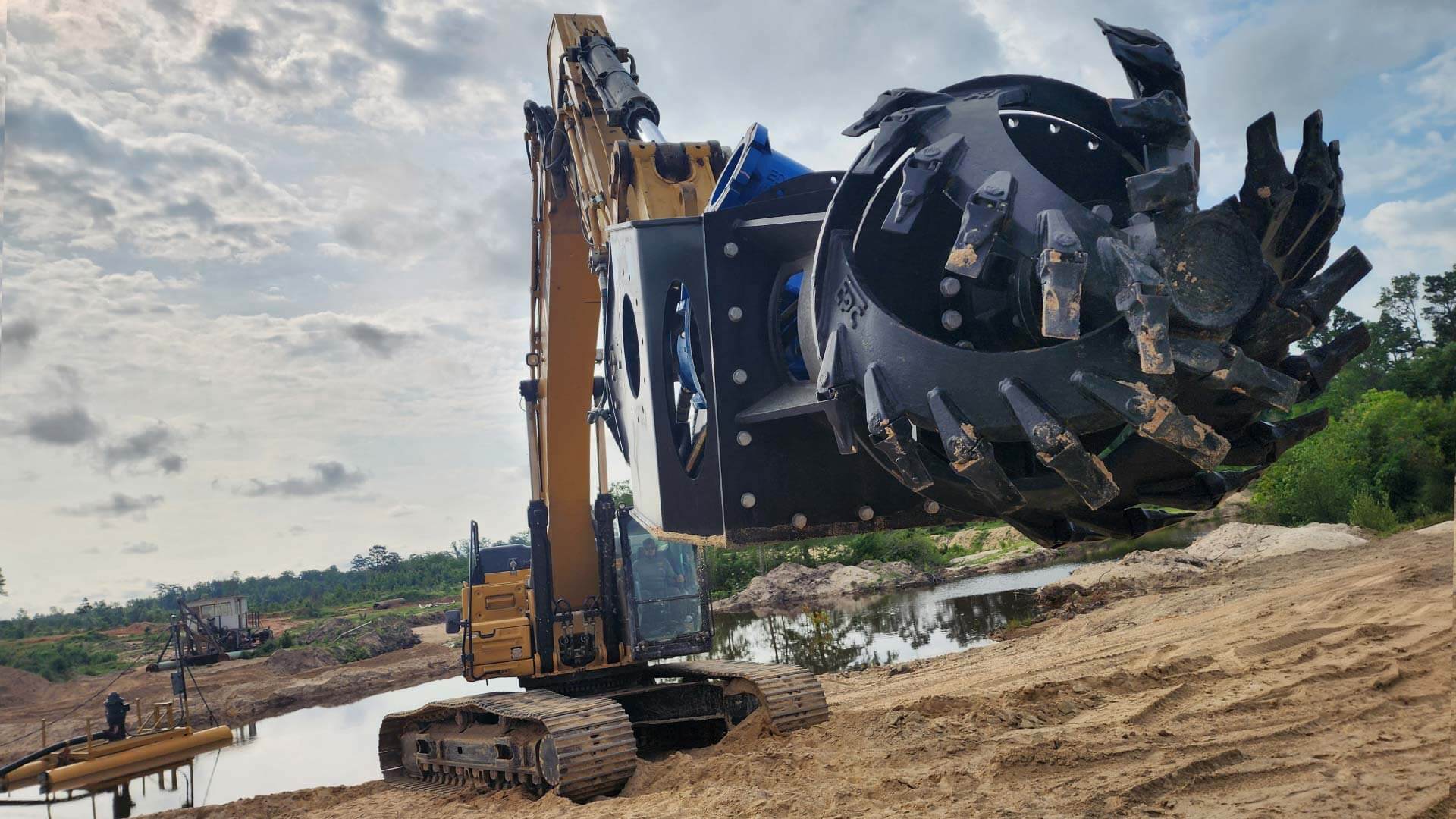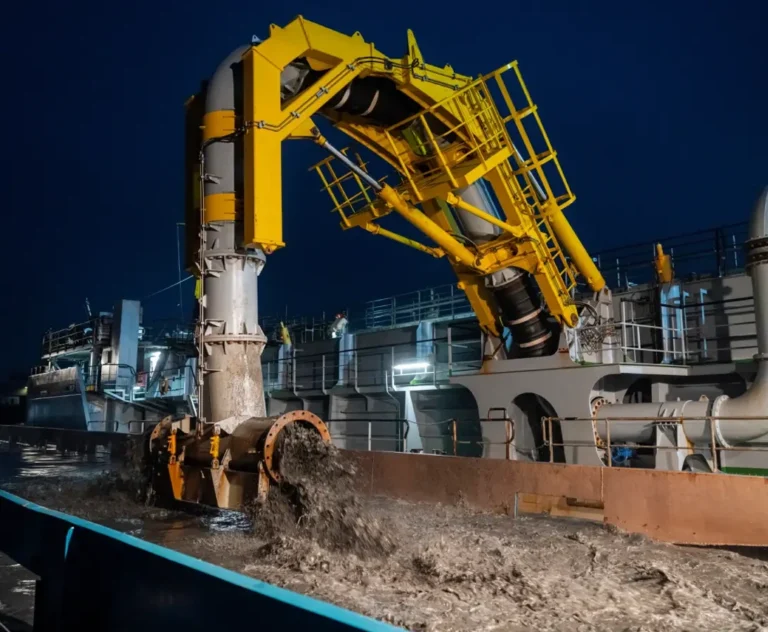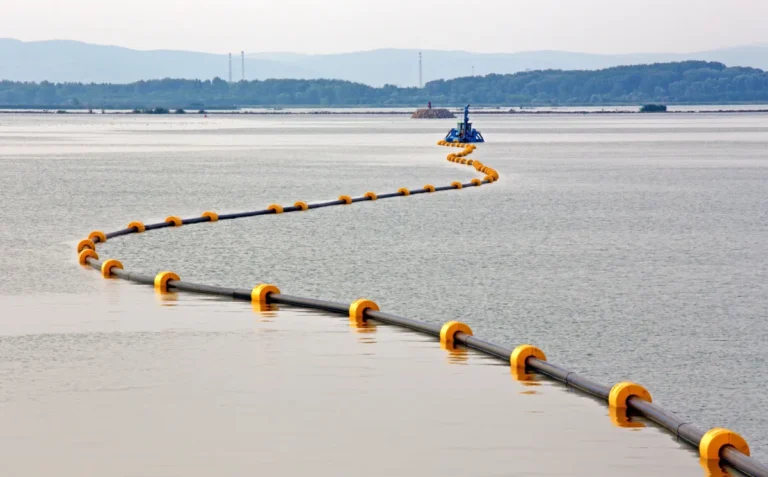In the highly specialized field of dredging, dredging companies must continuously optimize their equipment and operations to maintain efficiency, reduce costs, and minimize environmental impact. One of the most critical factors influencing dredging performance is hydrodynamics, the study of fluid behavior and how it interacts with dredging equipment such as pumps and cutter heads. By leveraging hydrodynamic principles, dredging contractors can significantly improve sediment removal, increase operational efficiency, and enhance overall project outcomes.
Hydrodynamics plays a crucial role in both hydraulic and mechanical dredging. In hydraulic dredging, the efficiency of slurry transport depends on factors like flow velocity, sediment concentration, and pipeline design, all of which can be optimized to maximize output. Mechanical dredging also benefits from hydrodynamic enhancements, particularly in cutter head design and sediment displacement. Properly engineered cutter heads reduce energy consumption, increase cutting force efficiency, and improve material excavation rates, enabling dredging companies to work faster and more effectively.
Understanding and applying hydrodynamic principles can significantly improve dredging performance. Optimized pump designs ensure smooth sediment transport, while advanced cutter head configurations improve material break-up and excavation efficiency. Without proper hydrodynamic considerations, dredging contractors may face issues such as excessive fuel consumption, equipment wear, and reduced dredging capacity, leading to higher costs and longer project timelines.
To overcome these challenges, many dredging companies turn to a dredging consultant who specializes in hydrodynamic optimization. A consultant can analyze dredging operations, recommend design improvements, and implement cutting-edge solutions to enhance efficiency. By refining pump performance, cutter head mechanics, and slurry transport systems, dredging contractors can achieve greater productivity while minimizing maintenance and operational costs.
Understanding Hydrodynamics in Dredging
Hydrodynamics, the study of fluid motion and its interaction with solid surfaces, plays a critical role in the efficiency and effectiveness of dredging operations. In the context of dredging companies, understanding hydrodynamic principles is essential for optimizing sediment removal, pump efficiency, and cutterhead performance. Whether in hydraulic or mechanical dredging, these principles determine how water, sediment, and dredging equipment interact, directly influencing operational productivity and cost-effectiveness.
One of the primary applications of hydrodynamics in dredging is slurry transport. In hydraulic dredging, high-powered pumps create a water-sediment mixture that moves through pipelines to a designated disposal or processing site. The efficiency of this process depends on factors such as flow velocity, sediment concentration, and pipeline resistance. Poor hydrodynamic design can lead to sediment settling within the pipeline, increased energy consumption, and excessive wear on equipment. Dredging contractors use hydrodynamic modeling to optimize slurry transport, ensuring maximum material throughput while minimizing operational disruptions.
Hydrodynamic principles also play a crucial role in cutterhead efficiency for mechanical dredging. A well-designed cutter head enhances sediment excavation by optimizing rotational speed, torque, and water flow around the cutting area. When properly engineered, cutter heads minimize turbulence, reduce energy loss, and improve sediment break-up, leading to more precise and efficient dredging. Dredging companies often collaborate with a dredging consultant to refine cutter head designs, improving their performance in different soil conditions, from fine silt to compacted clay or rock.
Another critical hydrodynamic factor in dredging is sediment displacement and water flow patterns. As dredging equipment removes sediment from the lakebed, riverbed, or seabed, it disturbs the surrounding water, creating complex flow patterns that can impact the dredging process. Understanding these patterns allows dredging contractors to minimize the resuspension of fine sediments, reduce turbidity, and maintain compliance with environmental regulations. Additionally, pump design plays a vital role in controlling suction efficiency and ensuring a steady flow of dredged material, reducing wear and energy consumption.
Dredging companies can optimize their equipment, improve material transport, and enhance overall project efficiency by leveraging hydrodynamic principles. Whether through better pump design, advanced cutter head configurations, or improved pipeline flow dynamics, mastering hydrodynamics is essential for maximizing productivity and minimizing operational costs in modern dredging operations.
Optimizing Dredge Pumps with Hydrodynamic Principles
Dredge pumps are the heart of hydraulic dredging operations, responsible for transporting sediment-laden water efficiently through pipelines. Optimizing pump performance is crucial for dredging companies to maintain high productivity while reducing operational costs. Hydrodynamic principles play a significant role in enhancing dredge pump efficiency by improving flow dynamics, minimizing turbulence, and preventing equipment wear.
How Dredge Pumps Function in Hydraulic Dredging
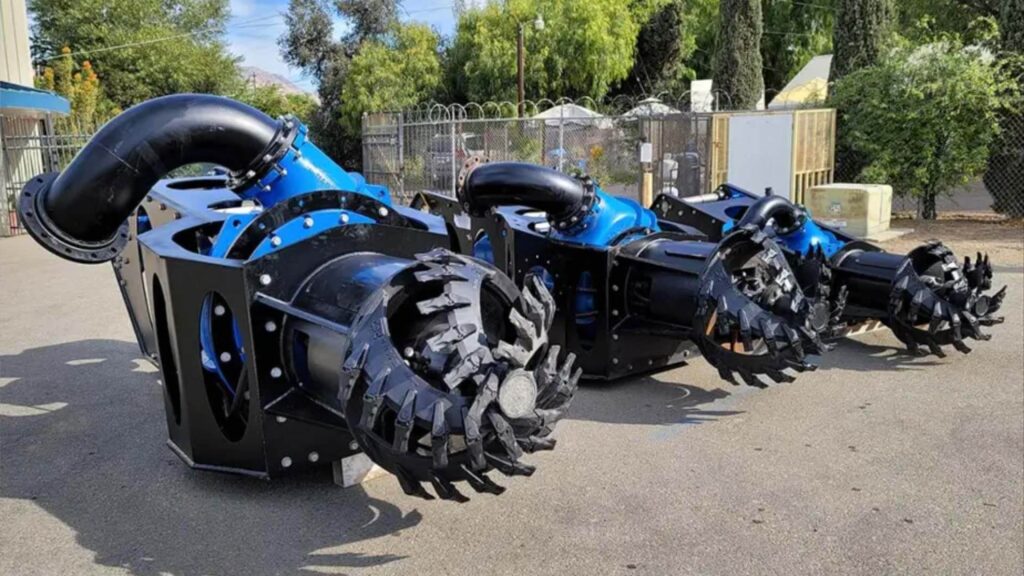
In hydraulic dredging, dredge pumps create a suction force that lifts sediment from the lakebed, riverbed, or seabed, mixing it with water to form a slurry. This slurry is then transported through pipelines to a designated disposal or processing site. The effectiveness of this process depends on key hydrodynamic factors, including flow velocity, turbulence control, and sediment transport efficiency. Dredging contractors must carefully manage these elements to ensure optimal pump operation and prevent performance issues such as clogging, cavitation, and excessive wear.
Key Hydrodynamic Factors Affecting Pump Efficiency
- Flow Velocity and Turbulence: Maintaining the right flow velocity is essential for efficient sediment transport. If the velocity is too low, sediment can settle within the pipeline, causing blockages. If it’s too high, excessive turbulence increases energy consumption and accelerates equipment wear. Proper hydrodynamic modeling helps dredging companies optimize velocity levels for maximum efficiency.
- Sediment Concentration and Slurry Density: The ratio of solids to water in the slurry significantly affects pump performance. Higher sediment concentrations improve dredging efficiency but also increase the risk of pipeline blockages and pump overload. Dredging contractors use advanced monitoring systems to maintain the ideal slurry density for efficient material transport.
- Impeller Design and Wear Resistance: The impeller is a critical component of a dredge pump, responsible for generating the necessary force to move slurry through the pipeline. Hydrodynamic optimization focuses on designing impellers that maximize efficiency while reducing wear from abrasive materials. Durable materials, improved blade curvature, and optimized volute designs help dredging companies extend pump lifespan and maintain high performance.
Methods Dredging Contractors Use to Optimize Pump Performance
- Computational Fluid Dynamics (CFD) Modeling: CFD simulations allow dredging consultants to analyze pump flow patterns, identify inefficiencies, and recommend design improvements. This advanced modeling technique helps dredging contractors reduce energy losses, optimize impeller shape, and enhance overall pump efficiency.
- Enhancing Impeller and Volute Design: Modifying the impeller’s shape, size, and material composition can significantly improve pump performance. Dredging companies can also reduce turbulence, improve slurry movement, and prevent energy loss by optimizing the volute casing.
- Reducing Cavitation and Clogging Issues: Cavitation, the formation of vapor bubbles due to pressure drops, can severely damage pump components. Proper hydrodynamic design minimizes cavitation risks by maintaining stable pressure levels within the pump. Additionally, anti-clogging mechanisms, such as improved suction inlets and self-cleaning impellers, help dredging contractors prevent downtime caused by sediment blockages.
Dredge companies can enhance efficiency, reduce maintenance costs, and improve overall project performance by implementing hydrodynamic principles in dredge pump design and operation. Dredge consultants also help ensure that hydraulic dredging operations run smoothly and efficiently through CFD modeling, advanced impeller technology, and optimized slurry transport.
Enhancing Cutterhead Performance with Hydrodynamic Design
The cutter head is a critical component in mechanical dredging operations, directly influencing excavation efficiency, fuel consumption, and overall project success. Dredging companies rely on cutter heads to break up compacted sediment, loosen material for efficient suction, and optimize dredging output. The performance of a cutter head is heavily dependent on hydrodynamic principles, including water flow dynamics, sediment interaction, and torque distribution. By refining these factors, dredging contractors can maximize material removal rates while minimizing energy consumption and equipment wear.
Role of the Cutterhead in Mechanical Dredging Operations
In cutter suction dredging, the cutter head rotates at high speeds to break up sediment before it is transported through a pipeline. The efficiency of this process depends on several key factors, such as rotational speed, cutting force, and how water interacts with the sediment during excavation. Properly designed cutter heads ensure smooth material disintegration while reducing resistance, allowing dredging companies to maintain continuous, high-output dredging.
Hydrodynamic Factors Influencing Cutterhead Efficiency
- Rotation Speed and Torque Optimization: The cutter head must rotate at an optimal speed to maximize cutting efficiency while minimizing excessive drag. Too fast, and it increases energy consumption and equipment wear; too slow, and sediment removal becomes inefficient. Dredging consultants analyze torque distribution and power efficiency to optimize cutter head speed for different sediment types.
- Cutting Force and Sediment Disintegration: The force applied by cutter teeth determines how effectively sediment is broken apart. Hydrodynamic analysis helps dredging contractors determine the ideal force distribution to break down compacted material while preventing excessive turbulence that could reduce suction efficiency.
- Water and Sediment Interaction Dynamics: The flow of water around the cutter head significantly impacts dredging performance. Poor hydrodynamic design can lead to increased turbidity, reduced sediment transport efficiency, and higher energy consumption. By optimizing water flow patterns, dredging companies can enhance cutter head suction efficiency and minimize sediment resuspension.
Techniques Used by Dredging Consultants to Enhance Cutterhead Performance

- Computational Simulations for Improved Cutting Action: Dredging consultants use Computational Fluid Dynamics (CFD) simulations to model cutter head performance in different sediment conditions. These simulations allow for design adjustments to optimize material disintegration and improve sediment flow into the suction intake.
- Adjustments in Cutter Tooth Design and Spacing: The placement, shape, and material composition of cutter teeth affect their ability to penetrate and break up sediment. By fine-tuning cutter tooth spacing and geometry, dredging contractors can reduce resistance, enhance cutting efficiency, and extend equipment lifespan.
- Innovations in Variable-Speed Cutterheads for Different Sediment Types: Some dredging companies implement advanced variable-speed cutter heads that adjust rotation based on real-time sediment conditions. This innovation automatically optimizes torque and cutting force, improving dredging efficiency across a range of sediment densities.
By incorporating hydrodynamic design improvements, dredging companies can enhance cutter head efficiency, reduce operational costs, and optimize sediment removal for mechanical dredging projects. With support from dredging consultants, contractors can refine their cutter head systems, leading to greater productivity and improved project outcomes.
Hydrodynamic Considerations in Pipeline Transport
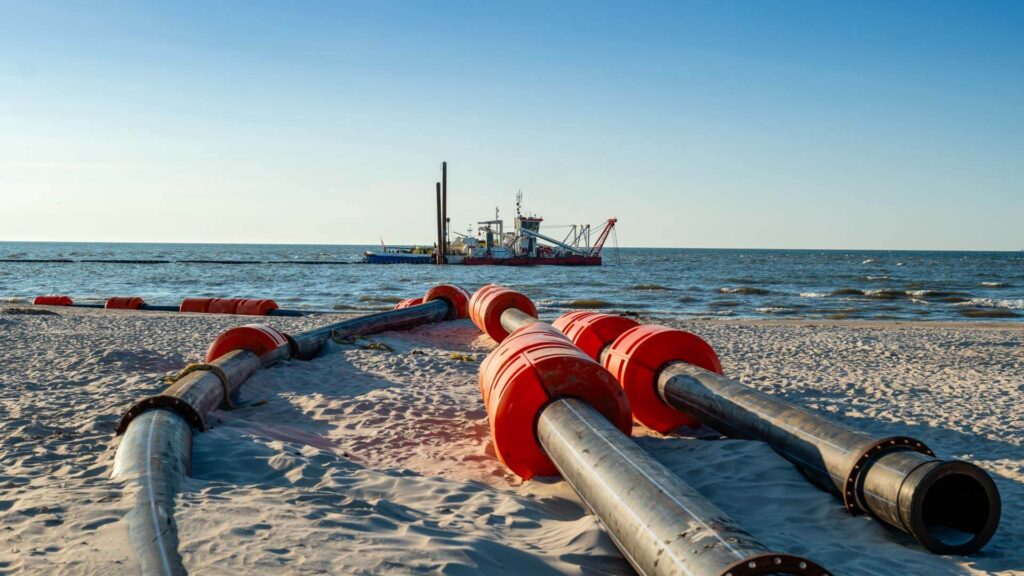
For dredging companies, optimizing sediment transport through pipelines is essential for maintaining efficiency and minimizing operational costs. Pipeline transport is a crucial part of hydraulic dredging, as it moves dredged material from the excavation site to the designated disposal or processing area. Hydrodynamic principles play a key role in ensuring smooth slurry movement, preventing blockages, and reducing equipment wear. By refining pipeline design and operational strategies, dredging contractors can improve material flow rates while minimizing downtime.
Factors Affecting Slurry Movement and Efficiency
- Pipe Diameter and Material Selection: The size and material composition of dredge pipelines significantly impact slurry transport efficiency. Larger-diameter pipes reduce friction losses, allowing for smoother sediment flow, while abrasion-resistant materials help extend pipeline lifespan. Dredging companies must balance pipeline dimensions with pump capacity to maintain optimal performance.
- Flow Velocity and Sediment Settling Rates: Maintaining the correct flow velocity is crucial to preventing sediment from settling within the pipeline. If the velocity is too low, heavy particles can accumulate, leading to blockages. Conversely, excessive velocity can increase wear on the pipeline and pumps. Dredging consultants analyze these factors to determine the ideal flow rate for different sediment compositions.
- Reducing Pipeline Friction and Blockages: Friction within the pipeline can slow down slurry movement, increasing energy consumption and wear. Dredging contractors use advanced hydrodynamic coatings, optimized pipe layouts, and anti-settling agents to minimize resistance and ensure consistent sediment transport.
Best Practices Used by Dredging Contractors to Improve Pipeline Performance
- Booster Pump Placement Strategies: In long-distance dredging operations, booster pumps help maintain consistent pressure and flow rates. Properly positioning these pumps along the pipeline ensures even distribution of force, reducing the risk of blockages and improving overall efficiency. Dredging companies use hydrodynamic modeling to determine the optimal placement of booster stations.
- Use of Anti-Settling Agents: Dredging contractors sometimes introduce anti-settling agents into the slurry to prevent sediment from settling within pipelines. These additives help keep fine sediments suspended, reducing the risk of clogging and improving flow stability.
- Hydrodynamic Modeling to Prevent Pipe Wear and Failures: Computational Fluid Dynamics (CFD) simulations allow dredging consultants to predict how slurry moves through a pipeline under different conditions. By using these models, dredging companies can design pipelines that reduce turbulence, minimize wear, and extend the lifespan of their infrastructure.
By optimizing pipeline transport with hydrodynamic principles, dredging contractors can significantly improve operational efficiency, reduce maintenance costs, and ensure smoother sediment transport for large-scale dredging projects. Proper pipeline design, flow management, and the use of advanced predictive modeling are key factors in achieving consistent and reliable dredging performance.
The Role of a Dredging Consultant in Hydrodynamic Optimization
Optimizing hydrodynamic performance is essential for dredging companies to improve efficiency, reduce operational costs, and minimize environmental impact. A dredging consultant plays a crucial role in assessing and enhancing dredging operations by applying advanced hydrodynamic principles to pump performance, cutter head efficiency, and sediment transport systems. By leveraging computational modeling and industry expertise, consultants help dredging contractors fine-tune their equipment and processes for maximum efficiency.
How Dredging Consultants Analyze and Improve Hydrodynamic Performance

A dredging consultant evaluates various hydrodynamic factors that influence dredging efficiency, including sediment transport dynamics, pump flow rates, and cutter head mechanics. By conducting field assessments and computational simulations, consultants identify inefficiencies in dredging systems and recommend targeted improvements. This process helps dredging companies reduce downtime, extend equipment lifespans, and enhance dredging precision.
Key Services Provided by Dredging Consultants
- Hydraulic Modeling and Dredge Performance Assessments: UConsultantsanalyze water flow patterns, sediment behavior, and equipment interactions. Using computational fluid dynamics (CFD) and other advanced simulation tools, These models help dredging contractors understand how modifications to dredge pumps, cutter heads, and pipeline systems can improve overall efficiency.
- Equipment Modifications for Enhanced Efficiency: A dredging consultant recommends and implements technical modifications to optimize dredging equipment. This includes refining impeller designs for dredge pumps, adjusting cutter-headed torque settings, and optimizing pipeline configurations to minimize friction losses. These improvements help dredging companies increase sediment removal rates while reducing energy consumption.
- Training Dredging Contractors on Best Practices for Hydrodynamic Optimization: In addition to equipment adjustments, consultants provide hands-on training for dredging contractors. This ensures crews understand the best practices for managing slurry transport, maintaining optimal pump flow, and reducing cutter headwear. This knowledge transfer helps improve long-term dredging performance and sustainability.
Real-World Example: How a Dredging Consultant Helped Reduce Operational Costs
Aue to inefficiencies in pump performance and cutter head operation, the large-scale dredging project was experiencing excessive fuel consumption and high maintenance costs. dA dredging consultant was brought in to conduct a hydrodynamic analysis, which revealedhat the pump impeller design was causing excessive turbulence and reducing suction efficiency. By redesigning the impeller and optimizing the cutter head’s rotational speed, the dredging company achieved a 20% reduction in fuel costs and a 30% increase in sediment removal efficiency.
A dredging consultant can help dredging companies optimize their hydrodynamic performance through expert analysis, equipment modifications, and crew training. This can improve project efficiency, reduce operational costs, and enhance environmental compliance.
Technological Innovations in Hydrodynamics for Dredging
As dredging companies strive for greater efficiency, cost reduction, and environmental sustainability, technological advancements in hydrodynamics are transforming the industry. Innovations such as artificial intelligence (AI), machine learning, self-optimizing dredge pumps, and advanced cutter head designs are revolutionizing the way dredging contractors approach sediment removal and material transport. By leveraging these cutting-edge technologies, companies can enhance dredging precision, reduce operational costs, and minimize ecological impact.
The Use of AI and Machine Learning in Hydrodynamic Modeling
AI and machine learning are playing a pivotal role in optimizing dredging operations through real-time data analysis and predictive modeling. Dredging consultants utilize AI-powered hydrodynamic simulations to analyze water flow patterns, sediment behavior, and equipment performance under various conditions. These models allow dredging companies to:
- Predict and adjust pump flow rates for optimal sediment transport.
- Identify potential inefficiencies in pipeline and cutter head performance.
- Automate dredging parameters based on changing water conditions.
- Minimize energy consumption by dynamically adjusting operational settings.
By integrating AI-driven monitoring systems, dredging contractors can make data-backed decisions that improve efficiency and reduce equipment wear, ensuring more cost-effective dredging projects.
Advances in Self-Optimizing Dredge Pumps for Efficiency Improvements
Traditional dredge pumps often require manual adjustments to maintain peak efficiency. However, advancements in hydrodynamic engineering have led to self-optimizing dredge pumps, which use automated sensors and real-time feedback loops to adjust impeller speed, flow rate, and suction power. These innovations help dredging companies by:
- Reducing cavitation and clogging through adaptive flow control.
- Enhancing slurry transport by dynamically modifying pump settings.
- Extending equipment lifespan by minimizing excessive wear.
Self-optimizing pumps ensure that dredging contractors can maintain consistent sediment transport without frequent manual intervention, improving overall project timelines and reducing maintenance costs.
The Future of Hydrodynamically Advanced Cutterheads in Dredging Companies
Cutterheads play a crucial role in mechanical dredging, and advancements in hydrodynamic design are making them more efficient than ever. Future developments in cutter head technology focus on the following:
- Variable-speed cutter heads that automatically adjust torque and rotation speed based on sediment hardness.
- Hydrodynamic tooth designs that reduce turbulence and improve sediment disintegration.
- Water-jet-assisted cutter heads that use directed water flow to enhance excavation efficiency.
By refining cutter head designs, dredging companies can increase material removal rates, minimize energy consumption, and improve performance in challenging sediment conditions.
Sustainability Considerations: Reducing Energy Consumption Through Better Hydrodynamic Design
Energy efficiency is a growing concern in the dredging industry, with a focus on reducing fuel consumption and lowering carbon footprints. Hydrodynamic innovations that contribute to sustainability include:
- Streamlined pipeline designs that minimize friction losses and improve slurry flow.
- Eco-friendly dredge pumps that operate with higher efficiency and lower power requirements.
- AI-driven dredging strategies that optimize operations to use minimal energy while achieving maximum sediment removal.
By adopting these hydrodynamic advancements, dredging contractors can reduce energy costs and contribute to more sustainable dredging practices, ensuring long-term efficiency and environmental responsibility in dredging operations.
Conclusion
Hydrodynamics plays a crucial role in optimizing the efficiency and effectiveness of dredging operations. By applying advanced hydrodynamic principles to dredge pumps, cutter heads, and sediment transport systems, dredging companies can enhance performance, reduce energy consumption, and extend equipment lifespan. Innovations such as AI-driven hydrodynamic modeling, self-optimizing dredge pumps, and advanced cutter-headed designs allow dredging contractors to maximize material removal rates while minimizing environmental impact. With the support of a dredging consultant, companies can fine-tune their equipment and operational strategies, ensuring optimal dredging outcomes for a wide range of projects.
As technology evolves, dredging companies that invest in hydrodynamic optimization will gain a competitive edge in the industry. By leveraging automation, real-time data analytics, and sustainable dredging practices, contractors can reduce operational costs and improve project efficiency. Whether through advanced pipeline transport strategies, AI-powered dredging systems, or eco-friendly equipment modifications, hydrodynamic advancements will continue to shape the future of dredging. For companies looking to enhance their dredging capabilities, integrating these innovations is essential to achieving long-term success in an increasingly demanding and environmentally conscious industry.
